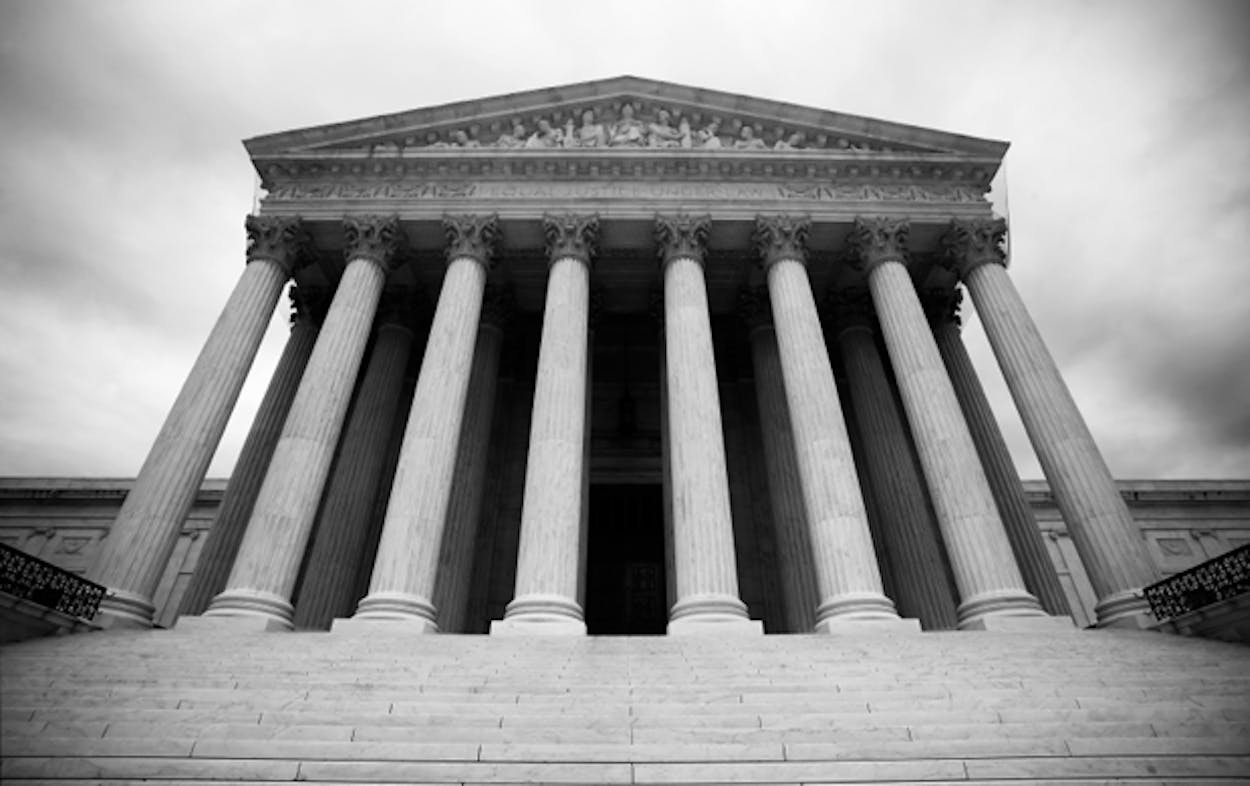The Supreme Court waded into Texas’ redistricting swamp in a Monday afternoon hearing, raising the possibility that primary elections could be pushed back even further to afford the courts more time to ruminate. The stakes could not be higher—both the control of the U.S. House of Representatives and the future of the Voting Rights Act potentially hang in the balance.
To simplfy the matter, before Texans can go to the ballot box for primaries, they need functioning district maps so they know where to vote and so politicians know where to run. Usually, the state’s congressional and state-level primaries take place the first Tuesday in March, but with all the redistricting rigamarole—which has been going on since the maps were unveiled last May—election day was pushed to April 3.
But Monday, the justices seemed to want them moved (again) to June 26 to give allow themselves until mid-February to rule on the thorny case, according to Gary Martin of Hearst’s Washington Bureau.
All of the justices seemed to be feeling the time crunch, the New York Times reported. “We are all under the gun of very strict time limitations,” said Chief Justice John G. Roberts Jr. “Why can’t all this be pushed back, and wouldn’t that eliminate a lot of problems we are grappling with in this case?” Justice Samuel Alito asked. Alito’s concerns were echoed by Justice Sonia Sotomayor, who pressed both sides to name a “drop dead date” for a Supreme Court decision on the matter, Martin wrote.
The looming primaries are “problematic because [the people of Texas] currently have no districting maps. Or, to be more precise, they currently have three,” wrote Slate‘s Dahlia Lithwick, who breaks down the incredibly tanlged story of the maps this way:
They have the map that was used 10 years ago, before the population expanded by 4.3 million voters (of whom 65 percent are Hispanic), thus requiring that legislative lines be redrawn to reflect that minority voting will not be diluted under Section 2 of the Voting Rights Act. (That will mean four more seats in the U.S. House of Representatives.) Then we have the redistricting map drawn by the GOP-dominated Texas legislature, which is also obsolete, because under Section 5 of the 1965 Voting Rights Act, states with a history of discrimination in voting must be “precleared” by either the U.S. Justice Department or a federal court in Washington, D.C., before any election-related modifications can be put into place. A federal court in Washington is set to decide whether the Texas redistricting plan will be precleared, but possibly seconds before the April primary. Enter the third set of maps, cooked up by a federal court in Texas—in part at the behest of the federal court in D.C., and several minority groups who say the new maps drawn up by the legislature in no way reflect the minority growth in the state. The Texas court thus drew up a set of “interim maps” to get Texas through this election crisis.
But the Texas Republicans found fault with the San Antonio court’s maps, deeming them not “sufficiently deferential” to the maps drawn by the legislature, Lithwick wrote. In December, sensing that more than district lines were at stake, the Supreme Court halted the whole process and agreed to step in, hear the case, and try their hand at splitting the baby. (Still confused? The Washington Post‘s Robert Barnes thoughtfully unpacked the issues in a piece previewing the hearing.)
So, did Monday’s oral arguments help clarify anything? No, says Lithwick:
The whole heap of it was argued this afternoon at 1 p.m., and by the time the lawyers sat down at 2:20, it was clear that the justices had done little more than get us 80 minutes closer to an April deadline without much hope of solving the problem, much less solving it yesterday.
And the Texas Tribune‘s Ross Ramsey distilled the court’s options:
It appears that the justices have to choose between waiting for the current round of lower court proceedings to play out, pushing back the primaries or choosing an interim map to use now, keeping the primaries on schedule.
The two most likely outcomes appear to be (a) follow Justice Kagan’s approach or (b) wait it out for the D.C. court. Justice Kagan’s approach would be a remand to the San Antonio court, with instructions for Texas to justify why its lines were likely to be precleared.
- More About:
- Politics & Policy
- Supreme Court







